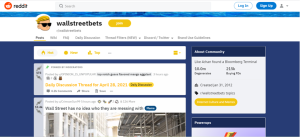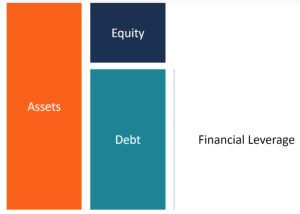Balance of Trades
In this article, Shruti CHAND (ESSEC Business School, Grande Ecole Program – Master in Management, 2020-2022) elaborates on the concept of balance of trade.
This read will help you get started with understanding balance of trade and how it is practiced in today’s world.
Introduction
Balance of trade (BOT) refers to the difference between the monitory value of a country’s imports and exports over a specific period of time.
Imports refers to goods and services produced by another country and purchased by the domestic country for its consumption purposes whereas exports refer to the sale of goods and services produced by the domestic country to another country.
Balance of trade is the biggest part of the balance of payment (BOP). Balance of payment is the sum total of all the economic transactions of the residents of the country with the rest of the world. It includes capital movements, loan repayments, tourism, freight and insurance charges, and other payments. The payments and receipts of each country must be equal where any apparent quality simply leaves one country acquiring assets in the other.
Coming back to the balance of trade (also known as the ‘trade balance’, ‘international trade balance’, ‘commercial balance’ or the ‘net exports’) can result in a surplus (exports > imports) or in a deficit (imports > exports). When the exports of a country exceed its imports, the country is said to have a trade surplus. When the imports of a country exceed its exports, the country is said to have a trade deficit.
There have been constant changes in the economic theories revolving around
the balance of trade. According to the theory of mercantilism, a favorable/surplus balance of trade was necessary for ensuring the growth and well-being of an economy. It also symbolized a country’s wealth and power. However, this theory was soon challenged by classical economic theory of the late 18 th century when economists such as Adam Smith argued that free trade is more beneficial than the tendencies of mercantilism. The classical theory argued that countries are not quired to maintain a surplus in order to be more beneficial that is because a continuing surplus might in fact represent the underutilization of resources that could have otherwise contributed towards the country’s wealth.
Generally, developing countries have difficulty maintaining surpluses since the terms of trade during periods of recession are unfavorable for them. This is because they have to pay comparatively higher prices for finished goods that they import but receive lower prices for their exports of raw material or unfurnished goods.
Calculation of the Balance of Trade
The balance of trade is simply calculated as exports minus imports. It can be represented as follows:
TB = X – M where,
TB = Trade Balance
X = Exports (value of goods and services sold to the rest of the world)
M = Imports (value of goods and services purchased by the rest of the world)
When the exports are greater than imports it results in a trade surplus whereas when imports are greater than exports it results in a trade deficit. A country with a large trade deficit generally borrows money from other countries to balance the trade deficit while a country with large trade suppliers lends money to other nation for investing purposes. Generally, on a surface level, surplus is preferable to a deficit. But in reality, this might be an oversimplification. This is because a trade deficit might not inherently be bad,
as it can be an indicator of a strong economy. In addition to this, when we combine practical and sensible investment decisions, a deficit may lead to the stronger economic growth of a country in the future.
Interpretation for an Economy
In a basic sense, economists use balance of trade to measure the relative strength of a country’s economy. A country where imports are greater than exports face a trade deficit whereas a country where exports are greater than imports face a trade surplus.
But the reality of a situation is different when it comes to the interpretation of an economy based on the balance of trade. Sometimes a trade deficit can be unfavorable for a nation that focuses a lot on the export of raw material. As a result, this type of economy usually imports a lot of consumer products. As a consequence of the scene, the domestic businesses don’t attain the experiences needed to compete in the international market. Instead, the economy becomes increasingly dependent on global commodity prices, which can be highly volatile for such economy. Sometimes countries adopt the complete opposite of trade deficit when they follow the theory of mercantilism. In this scenario countries believe in maintaining a continuous surplus of trade in order to achieve the growth of the economy. It indulges in protective measures such as tariffs and import quotas to ensure the same. As a result, such measures can facilitate for a trade surplus, but a continuous trade surplus might result in higher cost for consumers, reduce international trade and may lead to diminishing economic growth.
Therefore, a positive or negative trade balance done does not necessarily indicate a healthy or a weak economy. Whether a trade surplus/deficit is beneficial for an economy or not depends on multiple factors such as the countries involved, trade policy decisions, the duration of the trade surplus/deficit, the size of the trade imbalance etc. For example, business cycles are an important factor to consider while interpreting the balance of trade. Because, in a recession, and economy tries to create more jobs and demand in the economy and as a result prefers to export more. On the contrary, during an economic expansion, countries prefer to import to promote price competition and as a direct consequence to limit inflation.
Related posts on the SimTrade blog
▶ Bijal GANDHI Economic indicators
▶ Bijal GANDHI Gross Domestic Product (GDP)
About the author
Article written by Shruti CHAND (ESSEC Business School, Grande Ecole Program – Master in Management, 2020-2022).






